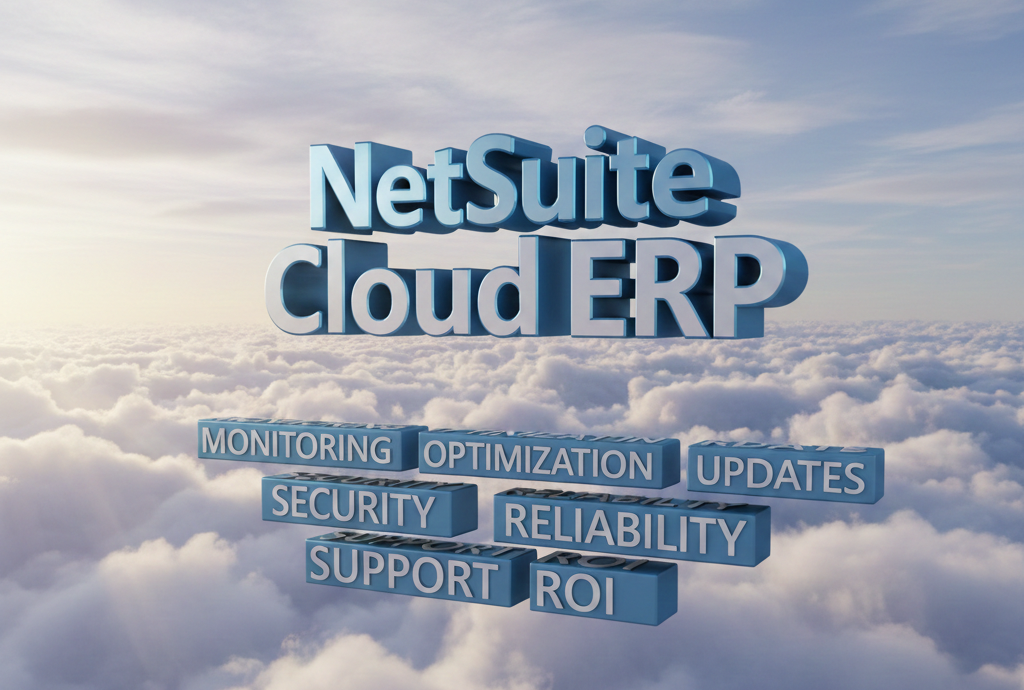In manufacturing, the old model of forecasting demand, producing large batches, and storing inventory is being challenged. Today, customers expect faster, more customized products—and many manufacturers are shifting to need-driven production, commonly referred to as on-demand manufacturing.
In this post, we’ll walk through what it means, how it works, its benefits and drawbacks, and how NetSuite Partners help manufacturers adopt on-demand manufacturing.
What Is On-Demand Manufacturing?
On-demand manufacturing means producing items only after a customer places an order—rather than building large quantities in advance and storing them.
The key ideas are:
- Customer places an order → production begins.
- Less or no excess inventory.
- Greater flexibility to customize.
By aligning production with actual demand, you reduce inventory cost, reduce the risk of unsold stock, and often increase responsiveness. But it also means changing operations: more agility, different workflows, different tooling.
How Does On-Demand Manufacturing Work?
Let’s break down the typical workflow and the systems behind it.
Order intake & specification
First, a customer places an order (often via web or configurable interface) and provides specifications. Systems map the specification into production terms such as material requirements, machine setup, and scheduling.
Quote, planning, and routing
Once the order is confirmed, a production plan is generated. This plan covers:
- Materials required
- Process steps
- Machine setup / change-over
- Quality control checkpoints
This replaces the old “produce once in bulk, then distribute” method.
Fabrication & finishing
Production begins. Because each order may be different (customization, materials, specifications), the factory must be configured for flexibility: modular tooling, machine change-overs, or digital manufacturing tools (3D printing, CNC machining, laser cutting). For example, a manufacturer might use 3D scanning of a customer’s measurements, then use CNC machining to produce custom parts.
Fulfilment & delivery
Once production completes, the item is shipped to the customer. Because inventory buffers are low or non-existent, supply chain, logistics, and timing matter heavily. Delays can hurt the model.
Technologies That Enable On-Demand Manufacturing
What makes on-demand manufacturing practical today? Here are key tech enablers:
- Additive manufacturing (3D printing): Useful for custom shapes, complex geometries, prototypes, and small batches.
- CNC machining: Software-controlled machinery lets you change specs quickly and run small batches efficiently.
- Laser cutting or engraving: Precision and flexibility for high-variation orders.
- Automation/robotics: Helps reduce setup times, enables rapid changeovers, and provides higher repeatability.
- Cloud-based software / ERP / digital manufacturing systems: Links order entry to production planning, real-time tracking of inventory, approvals, and scheduling.
- AI/analytics: Optimizes production flows, suggests the best manufacturing method per order, and predicts supply chain needs.
How NetSuite Partners Help Manufacturers Adopt On-Demand Manufacturing
Switching to on-demand manufacturing isn’t just a process change—it’s a systems change. You need unified visibility across orders, inventory, production, and supply chain. That’s where NetSuite comes in, and why NetSuite partners play a critical role.
Here’s how an experienced partner can help:
- Map your manufacturing processes: Partners analyze how your production, procurement, and fulfillment currently operate. They identify which steps can be automated or restructured for an on-demand flow—so you can start small and scale without disrupting existing operations.
- Implement the right NetSuite modules: NetSuite offers dedicated tools for manufacturing, inventory, and supply chain management. Certified partners configure the right modules—like Advanced Manufacturing, Demand Planning, and Work Orders & Assemblies—so production aligns directly with customer orders instead of forecasts.
- Integrate your systems and data: Most manufacturers run multiple systems for design, procurement, and scheduling. Partners ensure those systems talk to each other within NetSuite, creating a single source of truth for order tracking, raw-material visibility, and job scheduling.
- Enable real-time visibility: Partners help you set up dashboards and automated alerts so decision-makers can monitor inventory, job progress, and delivery timelines in real time. This level of visibility is what keeps on-demand production efficient and reliable.
- Support continuous improvement: A good partner doesn’t stop at implementation. They help refine your NetSuite setup over time—adjusting workflows, fine-tuning automation, and integrating new tools like AI forecasting or supplier collaboration portals as your operations evolve.
The Takeaway
On-demand manufacturing thrives on agility, and agility starts with a unified ERP system. NetSuite, when configured by the right partner, connects your entire production ecosystem—from customer orders to finished goods—so you can deliver faster, reduce waste, and keep pace with shifting demand.
If your goal is to move toward a more flexible, efficient manufacturing model, working with a NetSuite partner gives you both the technology and the strategic guidance to make that transition successful.
Frequently Asked Questions
What is on-demand manufacturing?
On-demand manufacturing is a production model where goods are made only after a customer places an order. Instead of producing in bulk and storing inventory, manufacturers produce based on actual demand, reducing waste and increasing flexibility.
How does on-demand manufacturing work?
The process starts when a customer places an order with specific requirements. The system translates those details into production instructions — materials, scheduling, and routing. The product is then fabricated, finished, and shipped directly to the customer, often with minimal inventory in between.
What technologies make on-demand manufacturing possible?
Technologies like 3D printing, CNC machining, laser cutting, robotics, and cloud-based ERP systems make on-demand manufacturing efficient. These tools help manufacturers adapt quickly to order changes, automate workflows, and maintain real-time visibility.
What are the benefits of on-demand manufacturing?
This model reduces excess inventory, lowers storage costs, and improves responsiveness to customer needs. It also supports greater product customization and helps manufacturers minimize waste from unsold stock.
What challenges come with on-demand manufacturing?
Manufacturers need to maintain tight coordination between orders, production, and supply chains. Without proper systems in place, delays or miscommunication can lead to inefficiencies or missed deadlines.
How does NetSuite support on-demand manufacturing?
NetSuite connects production, inventory, and order management within one system. It automates demand planning, tracks real-time inventory, and helps manufacturers align production directly with customer orders.
Why work with a NetSuite partner for on-demand manufacturing?
NetSuite partners help manufacturers implement, customize, and optimize NetSuite for their operations. They align ERP modules with production workflows, integrate existing systems, and provide ongoing support to improve efficiency and scalability.







